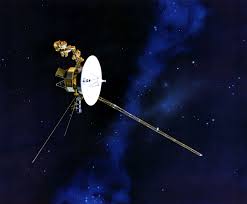Understanding NASA Voyager: Exploring the Depths of Space

The Importance of NASA Voyager Missions
The Voyager missions, launched in 1977, represent one of humanity’s most ambitious undertakings in space exploration. As the first spacecraft to travel beyond the outer planets of our solar system, Voyager 1 and Voyager 2 have provided invaluable data that reshaped our understanding of the cosmos. The missions have not only deepened our knowledge of the giants in our solar system but have also paved the way for future interstellar exploration.
Key Achievements of the Voyager Missions
NASA Voyager 1 and 2 began their journeys to explore Jupiter, Saturn, Uranus, and Neptune, delivering a wealth of information that was previously unknown. Voyager 1 made history by being the first spacecraft to enter interstellar space in August 2012, positioning itself over 14 billion miles from Earth. Its main discoveries include the intricate details of the atmosphere of Jupiter and the stunning rings of Saturn, as well as close-up images of both Uranus and Neptune.
Voyager 2, which flew by Uranus and Neptune, is notable for providing the first detailed images of these icy giant planets. Both missions carry the Golden Record, a time capsule intended to communicate the story of our world to extraterrestrials. This record contains music, greetings in multiple languages, and sounds of Earth, encapsulating humanity’s hopes and culture.
Recent Developments and Future Outlook
As of 2023, Voyager 1 continues to send back data from beyond the influence of our solar system. Despite its distance and the challenges posed by the harshness of interstellar space, Voyager 1 still communicates with NASA, providing insights into cosmic rays and the magnetic field of the solar system’s outer boundaries. Meanwhile, Voyager 2 has also successfully communicated its findings, continuing to shed light on cosmic phenomena far beyond our own planet.
The significance of these missions extends beyond mere exploration. They serve as a testament to human ingenuity and the yearning to understand our place in the universe. NASA’s commitment to the Voyager missions exemplifies the importance of long-term scientific endeavor, which can lead to unexpected discoveries and insights, potentially informing future missions.
Conclusion
The voyages of Voyager 1 and Voyager 2 have fundamentally changed our view of the solar system and the universe beyond. As we continue to receive data from these two intrepid explorers, we can expect more revelations about the nature of space. The legacy of the Voyager missions is not only pivotal in terms of what they have uncovered but also serves as a foundation for future explorations that may one day reach farther than we can currently imagine.









